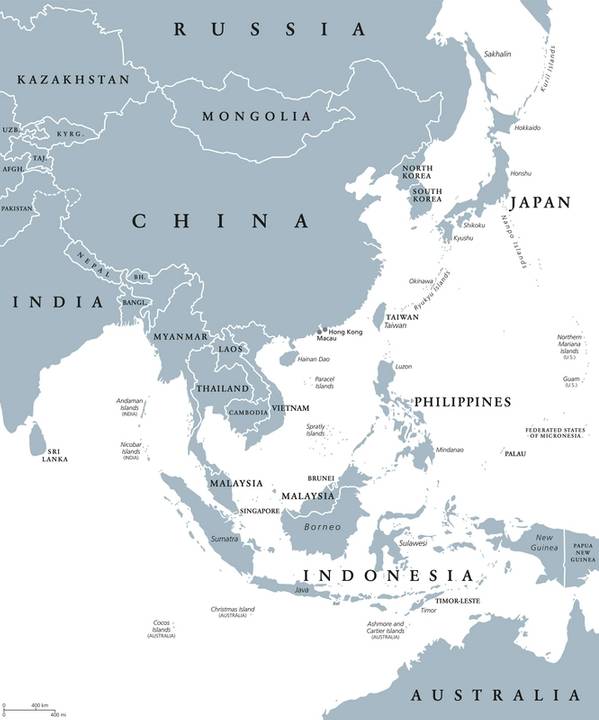
2023 was the first year of real recovery for owners in the offshore supply market and yet we have barely skimmed the surface of what’s to come.
The market is still on an upward trajectory with charter rates accelerating month-by-month, availability changing day-by-day, leading to earnings doubling and, in some segments, tripling since the lows of 2020. Current rates will remind many of the glory days of pre-2014 with the demand for OSVs projected to remain elevated for years to come.
In general, offshore deepwater economics have improved and the increasing pace of FID announcements indicates confidence in the market upcycle, with exploration sentiments also rising alongside the uptick in drilling activities. For the APAC region, Rystad Energy expects E&P vessel spending to grow by 17% this year, towards $2.2 billion. In Australia, this figure is set to surge by 62% to $184 million. This wider trend is in alignment with the strategy plans announced by the various NOCs in the region, as new projects offer strong economic fundamentals. Petronas and ONGC have declared their continued focus on domestic exploration, while PTTEP has allocated $6.7 billion for E&P activities in 2024.
The APAC region is poised to see an increase in activities this year. Current market developments suggest that OSV demand in Asia will peak in 2026, recording overall demand of more than 600 vessel years. Currently, Asia's active OSV fleet stands slightly above 500, with vessels increasingly tied to long-term contracts, further limiting availability. The lack of new supply influx also spells good news for owners, albeit an increasingly older age profile of existing vessels finds themselves in high demand, with Charterers scrambling to secure vessel days in advance.
As opposed to the period from 2015 onwards, early commitment from charterers is now key to securing the correct tonnage.
In 2023, we witnessed a flurry of significant S&P transactions, hinting at a very busy second-hand market on the horizon where sellers have the upper hand. Demand from other regions such as the Middle East is also seeing an upswing, leading to strong S&P interest across the high-end APAC fleet.
Turning our focus to specific regions, Australia is poised to become a significant market for decommissioning, with projections from the Center of Decommissioning Australia estimating a value of $40 billion for upcoming work, particularly in the Bass Strait region. Moreover, in Southeast Asia, numerous offshore wells are nearing the end of their production life, with projections indicating a considerable number will cease operation by 2030. This trend is mirrored in the Brunei market, where plans are underway to decommission 60 platforms between 2026 and 2032.
In Malaysia, Petronas reported 19 exploration discoveries last year, totalling more than 1 billion barrels of oil equivalent (boe). This series of successful discoveries highlights the untapped potential in Malaysia. With Petronas remaining committed to E&P investments in the region, Malaysia is expected to remain one of the largest markets for support vessels in the coming years. From decommissioning projects to new oil discoveries, there is no shortage of opportunities in APAC.
While commercial-scale projects have been slow to take shape in Asia, we are gradually transitioning from demonstration and pilot projects to large-scale commercial projects. Turbine sizes are expected to double from 8 MW today to 15 MW towards the end of the decade. We are also seeing interest from developers within the floating wind segment, which tends to see projects moving further away from shore. Notable projects on the horizon include the Holim 1.5GW project in Korea, Formosa 5 1.5GW and Winds of September 1GW project in Taiwan, as well as the Wakayama 1GW project in Japan.
According to forecasts by Rystad Energy, offshore wind installation spending in Asia (excl. China) is set to grow by 115% this year, recording $1.1 billion. With Asia contributing a high share of the global installation activity in the coming years, expecting to reach close to 60% of overall turbine additions from 2024 to 2028, this would mean traditional offshore vessels see demand and competition for work in both the O&G as well as the renewable sector.
From Taiwan to Japan, Korea, and Vietnam, these new frontiers all have ambitious offshore wind targets towards the end of the decade, driving demand for installation as well as support vessels. Moreover, following the recent announcement of the proposed expansion of its territorial waters in the larger economic zone (EEZ), Japan is expected to see a rise in its floating offshore wind presence, particularly in the deeper waters of the EEZ. Australia is another promising offshore wind player, with an estimated 200 turbines planned for installation by the end of the decade.
All these developments would mean higher demand for installation vessels such as the cable lay vessels and service operation vessels, which we have already seen being translated into newbuild orders in recent years.
OSV newbuilding is now at a record low after years of challenging market conditions, while the fleet is now moving towards to healthy market balance in favor of owners. Furthermore, of the working OSV fleet, around 15% are above the age of 20, indicating that the supply of working vessels will be further reduced in the coming years. Furthermore, when we look at the present tonnage in the market, we are recording an all-time high number of working vessels, with limited potential for fleet renewals in the coming two years. As of early 2024, charter rates are increasing at a healthy pace, and we are nearing levels where newbuilds could be justified financially.
We are seeing some interest as owners are again approaching yards to price new tonnage on the basis of securing long-term charters. However, there are several impeding factors when we speak about newbuilds. Firstly, yards are currently occupied with limited slot capacity to handle offshore newbuilds. The priorities of the yards have also shifted from what was observed a decade ago. There are currently less than a handful of yards focusing on the OSV segment as traditional builders have either changed their market focus or gone completely out of business.
The remaining ones are occupied with a heavy workload from the conventional shipping fleet orders, with many of the leading APAC yards claiming full orderbooks towards 2026. Newbuilding prices have climbed steeply in the past couple of years, making it more profitable for yards to focus on the larger commercial shipping segments. Yet, newbuilding prices are expected to remain firm with strong backlogs and yards not willing to offer back heavy payment structures as of today, as the downturn led to significant losses and discipline is now back in the sector.
The timeline for newbuild deliveries currently ranges from 24 months to 36 months given the limited technical capability and slot availability. Lead time of key equipment is contributing to these construction periods, as the supply chain is still not ready to handle significant volume. We believe that a surge in orderbook for offshore vessels is unlikely to happen in the next 12 to 18 months despite the recovering market condition and confidence, as financing will continue to be a key challenge for traditional OSV owners. Liquidity and lack of retained earnings remain a challenge for owners as the terms laid out by yards require substantial equity early in the instalment schedule. Adding fuel to the fire, many traditional OSV lenders are not willing to finance O&G newbuilds even with a contract in place upon delivery.
While rates have increased significantly since 2020, most segments have yet to reach a level that would justify a newbuild. We do see speculative orders placed this year with alternative capital sources, while the volume in newbuilding during the previous upcycle is highly unlikely to be repeated. With that being said, it is likely that we will see a prolonged cycle due to rising demand, static supply and a challenging market for newbuilding. These factors are shaping up to be an exciting time for the offshore industry, and those with existing tonnage in the game will need to stay nimble to capitalize on the opportunities ahead.
 About the Author: Michelle Yeo is a Market Analyst at Fearnley Offshore Supply, covering the offshore support vessel market, including both O&G and renewables.
About the Author: Michelle Yeo is a Market Analyst at Fearnley Offshore Supply, covering the offshore support vessel market, including both O&G and renewables.